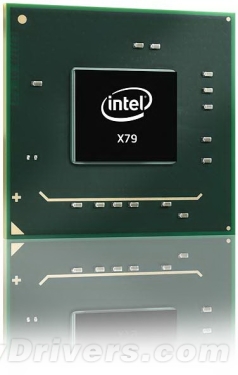SNB-E hopes to win the summit X79
 The Sandy Bridge-E processor became a new generation of overlord after the release of the processor, but the supporting X79 chipset was completely covered by its light. Compared to the mighty SNB-E, the X79, which is the first member of the Patsburg family of chipsets, did not reach the level expected by Intel and consumers at all. The development process experienced two cuts, and the end result and the P67 looked nothing. Two kinds.
The Sandy Bridge-E processor became a new generation of overlord after the release of the processor, but the supporting X79 chipset was completely covered by its light. Compared to the mighty SNB-E, the X79, which is the first member of the Patsburg family of chipsets, did not reach the level expected by Intel and consumers at all. The development process experienced two cuts, and the end result and the P67 looked nothing. Two kinds. Intel initially prepared to implement PCI-E 3.0 native support and up to fourteen disk interfaces on the X79, and a large number of SATA/SAS 6Gbps support, but the former ultimately only exist in theory, the latter because of problems with the storage control unit (SCU) Only two SATA 6Gbps and four SATA 3Gbps are left.
In order not to delay the next year's LGA2011, LGA1356 Xeon E5 series server processors, Intel has prepared a temporary plan "Patsburg-J" in the chipset, essentially no difference with the X79.
Another inconvenience is power consumption. The X79's thermal design power consumption has reached 7.8W, which is significantly higher than the 6.1W of the 6 series. However, the server version of the C600 series will be improved to a maximum of 6.7W. The reason may be due to a large number of unnecessary functions removed on the server, including redundant USB 2.0 interfaces, two PCI-E x1 buses, native PCI support, integrated Gigabit Ethernet MAC, and audio, resulting in a lot of savings. Power consumption. As for why the X79 is so hot, it is mainly because the shielded SCU is hidden and does not play any role, but it still consumes energy.
The price of the X79 is also highly controversial, with incomplete features that cost as much as $73, compared to $48 for the Z68. The previous generation dual-chip X58+ICHR10 was only $53. Not only will motherboard makers have to pay for this, they must also face another problem. That is, Intel is preparing a new stepping version of the X79. It is uncertain which day will be eliminated and the motherboard makers have to spend money to keep up.
What's more complicated is that not only do we not know when this new step X79 will come (should it be before the new Xeon), we will not be able to feel comfortable acquiring more features. At that time, Intel will allow motherboard manufacturers to open the SCU, but only four SATA 6Gbps interfaces can work. Moreover, Intel does not guarantee the performance, reliability, and data integrity of these four SATA 6Gbps interfaces. Motherboard manufacturers and consumers must take risks themselves.
For an industry giant such as Intel, it is natural for new product development to encounter troubles. However, it is unreasonable to experience a lot of disk storage failures. First, the serial SATA 6Gbps interface of the 6 series has defects and it has to be recalled. ; Then the X79 SATA/SAS 6Gbps support could not be implemented and had to be severely shrunk.
USB Type C Cables USB 3.0 Cables CO.,LTD , http://www.nscables.com